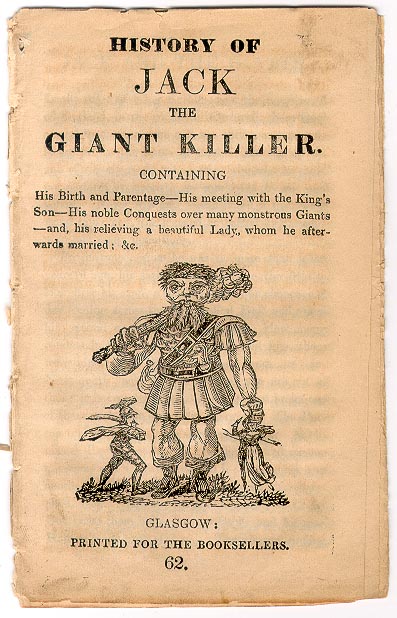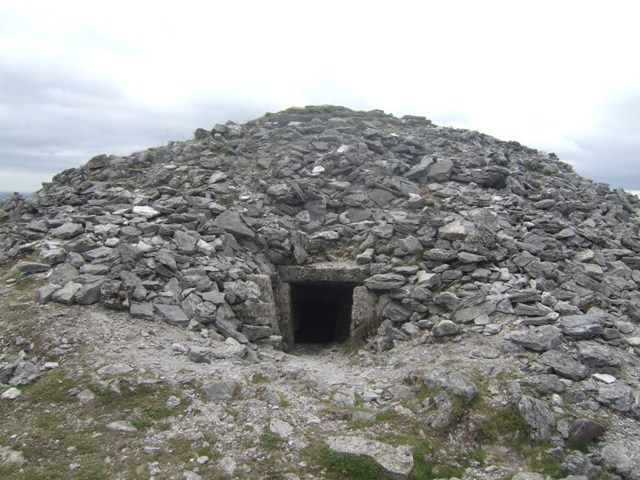|
Hagbard And Signy
Hagbard and Signe (Signy) (the Viking Age) or Habor and Sign(h)ild (the Middle Ages and later) were a pair of lovers in Scandinavian mythology and folklore whose legend was widely popular. The heroes' connections with other legendary characters place the events in the 5th century AD. Hagbard and his brother Haki were famous sea-kings (see Haki for his battles over the throne of Sweden). Like the name Hagbard (''Hagbarðr''), the legend is believed to have continental Germanic origins.Peterson, Lena. (2002). ''Nordiskt runnamnslexikon'', at ''Institutet för språk och folkminnen'', Sweden. Storyline During the centuries of popularity the story changed. This is the most comprehensive version from ''Gesta Danorum'' (book 7) ...[...More Info...] [...Related Items...] OR: [Wikipedia] [Google] [Baidu] |
Chapbook
A chapbook is a type of small printed booklet that was a popular medium for street literature throughout early modern Europe. Chapbooks were usually produced cheaply, illustrated with crude woodcuts and printed on a single sheet folded into 8, 12, 16, or 24 pages, sometimes bound with a saddle stitch. Printers provided chapbooks on credit to chapmen, who sold them both from door to door and at markets and fairs, then paying for the stock they sold. The tradition of chapbooks emerged during the 16th century as printed books were becoming affordable, with the medium ultimately reaching its height of popularity during the 17th and 18th centuries. Various ephemera and popular or folk literature were published as chapbooks, such as almanacs, children's literature, folklore, ballads, nursery rhymes, pamphlets, poetry, and political and religious Tract (literature), tracts. The term ''chapbook'' remains in use by publishers to refer to short, inexpensive booklets. Terminology ''Chapbook ... [...More Info...] [...Related Items...] OR: [Wikipedia] [Google] [Baidu] |
Johannes Messenius
Johannes Messenius (1579–1636) was a Sweden, Swedish historian, dramatist and university professor. He was born in the village of Freberga, in Stenby parish in Östergötland, and died in Oulu, in modern-day Finland. Childhood He was the son of a miller named Jöns Thordsson. At an early age his brilliance caught the attention of a monastery priest named Magnus Andreae, who gave him guidance and taught him. Unbeknownst to the boy's parents, the priest sent him to the Society of Jesus, Jesuit school in Braunsberg, which was specialized in educating boys for winning Scandinavia back from Protestantism. Seeking a position After seven years in Braunsberg, Johannes travelled across Europe. He visited Denmark in 1602, and in 1603, he was a dinner speaker at Bishop Piotr Tylicki in Kraków. He made a short visit in Rome in 1604, but the climate forced him to return to Germany where he possibly won an M.A. in Ingolstadt, in 1605. He is also said to have received the title ''Poëta cæs ... [...More Info...] [...Related Items...] OR: [Wikipedia] [Google] [Baidu] |
Old Sigtuna
Signhildsberg (historically Fornsigtuna, where ''forn'' means ''ancient'', Old Sigtuna, ''Sithun'', ''Signesberg'') is a manor that formerly was a royal estate (Uppsala öd), located in the parish of Håtuna approximately west of the modern town of Sigtuna, by Lake Mälaren in Sweden. Although the location is nearly forgotten, it has a central role in Norse mythology, according to which it was founded by the Norse god Odin. Etymology The name ''Sigtuna'' is contested. According to one theory, it is a compound name where the second element is -''tuna'' and the first one is either of two closely related dialectal words, viz. ''sig'' meaning "seeping water" or "swamp" or ''sik'' meaning "swamp". As a basis for this intpretation, a brook south of Signhildsberg has been mentioned, or the fact that the estate was surrounded by marshy terrain.Entry ''Sigtuna'' in Svenskt ortnamnslexikon. Ed. Mats Wahlberg. Institutet för språk och folkminnen, Uppsala 2003. Another theory consider ... [...More Info...] [...Related Items...] OR: [Wikipedia] [Google] [Baidu] |
Uppland
Uppland is a historical province or ' on the eastern coast of Sweden, just north of Stockholm, the capital. It borders Södermanland, Västmanland and Gästrikland. It is also bounded by lake Mälaren and the Baltic Sea. The name literally means ''up land'', a name which is commonly encountered in especially older English literaturer as ''Upland''. Its Latinised form, which is occasionally used, is ''Uplandia''. Uppland is often called called the province of "castles, ancient remains and runestones" and is famous for having the highest concentration of runestones in the world, with as many as 1,196 inscriptions in stone left by the Vikings. Many of its castles and places of historical interest include Drottningholm Palace, Skokloster Castle, Salsta Castle, the medieval Uppsala Cathedral, where many royals are buried, and Uppsala Castle. Famous people from the region include Ingmar Bergman, St. Bridget of Sweden, Carl Linnaeus, Anders Celsius and Gustav Vasa. It ... [...More Info...] [...Related Items...] OR: [Wikipedia] [Google] [Baidu] |
Sigtuna
Sigtuna is a Urban areas in Sweden, locality situated in the eponymous Sigtuna Municipality, in Stockholm County, Sweden with 9,689 inhabitants in 2020. It is the namesake even though the seat of the municipality is in another locality, Märsta. Sigtuna is for historical reasons still often referred to as a . Sigtuna is situated at the bay Skarven, stretching around Upplands-Bro and a part of Mälaren, Lake Mälaren. Present-day Sigtuna, a harbour town that was established around 980, developed about east of Old Sigtuna, which, according to Old Norse religion, was previously the home of the widely revered god Odin. Etymology The name of Sigtuna was moved from what is presently called Fornsigtuna, Signhildsberg. The meaning of ''Sigtuna'' is contested. According to one theory, it is a compound (linguistics), compound name where the second element is -''wikt:tún#Old_Norse, tuna'' and the first one is either of two closely related dialectal words, viz. ''sig'' meaning "seeping wate ... [...More Info...] [...Related Items...] OR: [Wikipedia] [Google] [Baidu] |
Cairn
A cairn is a human-made pile (or stack) of stones raised for a purpose, usually as a marker or as a burial mound. The word ''cairn'' comes from the (plural ). Cairns have been and are used for a broad variety of purposes. In prehistory, they were raised as markers, as memorials and as burial monuments (some of which Chambered cairn, contained chambers). In the modern era, cairns are often raised as landmarks, especially to mark the summits of mountains, and as Trail blazing, trail markers. They vary in size from small piles of stones to entire artificial hills, and in complexity from loose conical rock piles to elaborate megalithic structures. Cairns may be painted or otherwise decorated, whether for increased visibility or for religious reasons. History Europe The building of cairns for various purposes goes back into prehistory in Eurasia, ranging in size from small rock sculptures to substantial human-made hills of stone (some built on top of larger, natural hills). ... [...More Info...] [...Related Items...] OR: [Wikipedia] [Google] [Baidu] |
Närke
Närke () is a Swedish traditional province, or ''landskap'', situated in Svealand in south central Sweden. It is bordered by Västmanland to the north, Södermanland to the east, Östergötland to the southeast, Västergötland to the southwest, and Värmland to the northwest. Närke has a surface area of 4,126 km² and a total population of 208,376. Name The name of the province (Neeric 1165-81) comes from an old word ''när'' (narrow) which refers to the narrow ridge where the church of Norrbyås (Nerboahs 1275) is situated. What the rest of the name means is not clear. In English sometimes also ''Nerike'' (an archaic spelling of the province) and ''Nericia'' (the Latin name) are used for the province. Administration The traditional provinces of Sweden serve no administrative or political purposes, but are historical and cultural entities. In the case of Närke, the province makes up the southern part of Örebro County. The following municipalities have t ... [...More Info...] [...Related Items...] OR: [Wikipedia] [Google] [Baidu] |
Blekinge
Blekinge () is one of the traditional Swedish provinces (), situated in the southern coast of the geographic region of Götaland, in southern Sweden. It borders Småland, Scania and the Baltic Sea. It is the country's second-smallest province by area (only Öland is smaller), and the smallest province located on the mainland. The name "Blekinge" comes from the dialectal adjective , which corresponds to the nautical term for "dead calm". Administration The historical provinces of Sweden serve no administrative function. However, Blekinge is the only province, besides Gotland, which covers exactly the same area as the administrative county, which is Blekinge County. Heraldry Blekinge was granted its current arms in 1660 at the time of the funeral of King Charles X Gustav of Sweden (1622–1660) based on a seal from the 15th century. Symbolically the three crowns from the Coat of arms of Sweden had been placed on the trunk of the tree to mark the change in status of t ... [...More Info...] [...Related Items...] OR: [Wikipedia] [Google] [Baidu] |
Falkenberg
Falkenberg is a locality and the seat of Falkenberg Municipality, Halland County, Sweden, with 27,813 inhabitants in 2019 (out of a municipal total of about 45,000). It is located at the mouth of river Ätran. The name consists of the Swedish words for falcon (''falk'') and mountain (''berg''). Falkenberg is a popular tourist destination in the summers, and the main beach of the town is Skrea strand. History In the early part of the 13th century the Danish king built a fort on the east shore of the river Ätran, which eventually would give the town its name. Halland was at that time part of Denmark. It is known that falconry was pursued in the area. However, in Hallandia antiqua et hodierna, that specified a location ("mountain") where the falconry should have taken place, and which should have given name to the town, has later been shown to be incorrect. The area north of Ätran was from time to time Norwegian or Swedish. It was on this side that a market town de ... [...More Info...] [...Related Items...] OR: [Wikipedia] [Google] [Baidu] |
Halmstad
Halmstad () is a port, university, industrial and recreational urban areas of Sweden, city at the mouth of the Nissan (river), Nissan river, in the provinces of Sweden, province of Halland on the Sweden, Swedish west coast. Halmstad is the seat of Halmstad Municipality and the capital of Halland County. The city had a population of 71,422 in 2020, out of a municipal total of over 100,000. Halmstad is Sweden's 19th-largest city by population and located about midway between Gothenburg (the second most populous) and Malmö (the third). History Halmstad, at the time part of the Kingdom of Denmark, received its first city charter in 1307, and the city celebrated its 700th anniversary in 2007. The oldest remains of that first town are to be found at "Övraby" upstream on Nissan, just south of and quite close to the present day regiment buildings. The remains of the church can still be seen today between a defunct brick industry and a former landfill. In the 1320s the town moved to t ... [...More Info...] [...Related Items...] OR: [Wikipedia] [Google] [Baidu] |
Halland
Halland () is one of the traditional provinces of Sweden (''landskap''), on the western coast of Götaland, southern Sweden. It borders Västergötland, Småland, Skåne, Scania and the sea of Kattegat. Until 1645 and the Second Treaty of Brömsebro (1645), Second Treaty of Brömsebro, it was part of the Kingdom of Denmark. Its name means ''Land of Rocky Slabs'' (Swedish: ''hällar'') referring to the coastal cliffs of especially the northern part of the region. Administration The provinces of Sweden serve no administrative function. Instead, that function is served by the Counties of Sweden. However, the province of Halland is almost coextensive with the administrative Halland County, though parts of the province belong to Västra Götaland County and Skåne County, while the county also includes parts of Småland and Västergötland. As of 31 December 2023, Halland had a population of 351,508. Heraldry During the Danish era until 1658, the province had no coat of arms a ... [...More Info...] [...Related Items...] OR: [Wikipedia] [Google] [Baidu] |


